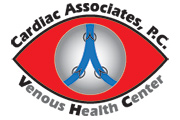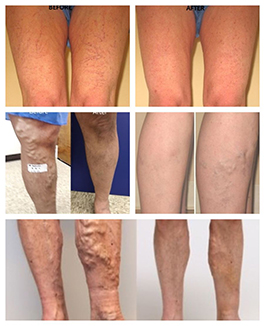 Lower extremity deep venous thrombosis is a common and potentially serious medical problem in which one or several blood clots form in the deep or superficial leg veins that run from the lower body back to the heart and lungs.
Lower extremity deep venous thrombosis is a common and potentially serious medical problem in which one or several blood clots form in the deep or superficial leg veins that run from the lower body back to the heart and lungs.
Symptoms of deep venous thrombosis (DVT) can include swelling, pain when walking and discoloration in the affected leg or ankle. Some patients notice that the skin above the clot area feels feverish to the touch. DVT can sometimes also result in permanent obstruction to the affected veins and or damage to deep vein valves leading to post thrombotic chronic venous insufficiency including spider and varicose veins. But many times DVT exhibits no noticeable symptoms at all.
It is estimated that 10-25% of untreated or undiagnosed cases of DVT may progress to a condition known as pulmonary embolism as the blood clot associated with DVT breaks away from the vein wall and travels up to the lungs, where it becomes lodged. The lodged clot can block off the blood supply to the lungs, interfering of the oxygen delivery and resulting in respiratory failure, disability or death. Pulmonary embolism is a serious condition with up to a 15% mortality rate.
Timely and accurate diagnosis of deep venous thrombosis can aid in reducing the morbidity and mortality associated with this condition. Doppler venous ultrasound has been used traditionally as a non-invasive way to detect DVT and continues to remain the most common diagnostic tool used by even the best vein doctors in Washington DC. Anticoagulation with a blood thinning medication is one of the standard therapies for DVT. Other options may include minimally invasive procedures performed by a vein removal doctor in Washington DC.


